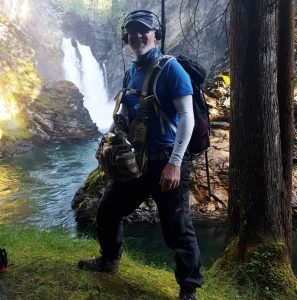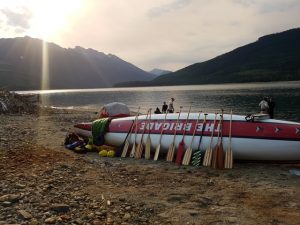Outdoor Channel Takes On-Field Sound Capture to Extremes
Coverage of 750-mile overland canoe race stretches audio-team capabilities
Story Highlights
Athlete audio has gone from challenge to novelty to SOP for most major-league sports in just a few years. Now the technique is turning up in increasingly extreme situations, capturing intense moments from the participants’ point of view.
One of the more extreme of the extreme-sports categories, overland canoe racing has its roots in how fur traders got their wares through the uncharted forests of North America to the markets of the East. In the modern version, a 10-member team of participants from the U.S. and Canada travel a 750-mile route that goes from Castlegar, BC, to York Factory, MB, canoeing whitewater and trekking dense forests for 28 days to win a $500,000 prize. The event can be seen on Outdoor Channel’s The Brigade: Race to the Hudson (8 p.m. ET, Saturdays). Getting the audio makes miking an NFL scrimmage seem like a walk in the park.

Audio supervisor David Best spent 45 days in the British Columbia wilderness capturing sound for Outdoor Channel’s The Brigade: Race to the Hudson.
“Absolutely,” says audio supervisor David Best. “What people want more and more of is the action in the moment, and to capture that we have to have microphones on them at all times, rather than try to clip them on the fly.
“For much of what you see onscreen,” he continues, “all 10 crew members are in a Voyager canoe and out on the water most of the day. Each crew member wears two lav mics, with one feeding a [Lectrosonics] PDR portable digital recorder and the other feeding an SMQV beltpack transmitter. Everyone has one of each, which we put in waterproof aqua packs, which are worn in fanny packs.
“The PDRs wound up being our primary audio source for the on-water sequences,” he adds, “when the team members are completely on their own, with video captured through action cams, such as GoPros. The SMQVs were for when we could buzz by with our receiver bags on a Zodiac camera boat or when we knew they were arriving at a certain spot and could do a multicamera shoot. We needed an ultra-rugged solution for recording high-quality audio locally. We anticipated the canoe being out of range of our bag systems a lot of the time. That’s where the PDRs came in.”
More audio is captured in the form of a secondary system for an IFB signal.

Outdoor Channel’s The Brigade: Race to the Hudson covers 10-person team competing in 750-mile/28-day overland canoe race.
“For a monitor mix when the canoe was in wireless range, we put five [Lectrosonics] SRc receivers in a dry bag with a Sound Devices mixer,” Best explains. “We fed its output to another SMQV transmitter that we literally ran up a flagpole at the stern of the boat with a shark-fin antenna. Point being, that bag was on the bottom of the canoe all day every day, getting kicked around and splashed. And we had zero failures during production.”
Changing transmitter batteries during breaks in the action wasn’t a possibility. (There were no breaks!” he says.) Instead, he set the SMQVs in 50-mW mode, which would let them run as long as 16 hours a day.
Even the aqua packs weren’t complete protection against moisture. “The aqua packs seal very well against outside water, but, with all the varying temperature and humidity, condensation forms on the inside of the bag. By the end of a production day, the SMQV and PDR in any given pack would usually be swimming in it. I mean, we’d pour out a couple of ounces of liquid.”
Best adds that the athlete audio becoming ubiquitous in live sports coverage is influencing how — and how much — sound is collected around competitions.
“Nothing can get you closer to the action than hearing the people who are competing while they’re competing,” he says. “Making this kind of audio really sound great is the next big challenge in pro audio.”
